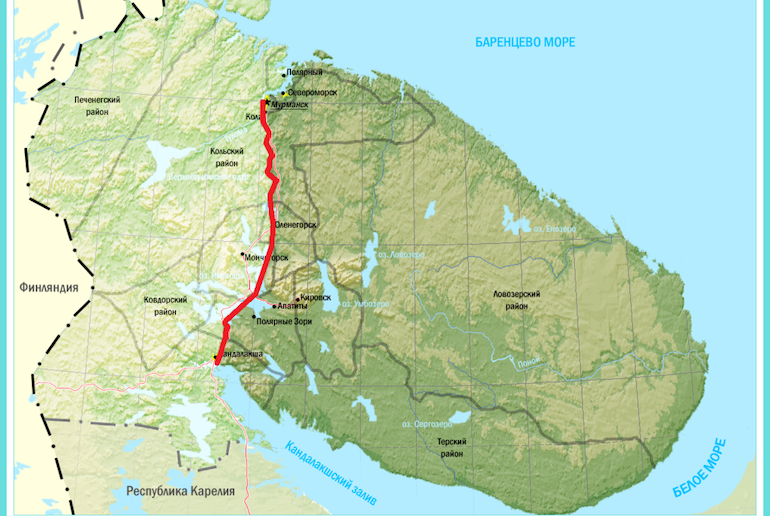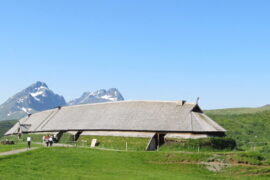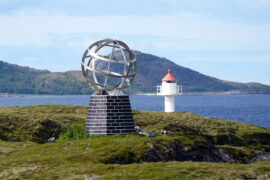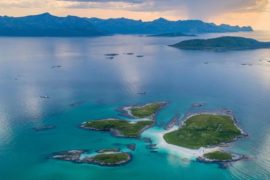You will certainly have heard of Scandinavia, and may well know which countries it includes, but do you know what Fennoscandia is, and which the Fennoscandian countries are?

More importantly, what is the definition of Fennoscandia? And where is this weird-sounding place?
Read on to find out all you need to know about Fennoscandia!
What is Fennoscandia?
Fennoscandia is a geographical region that includes the Scandinavian peninsula, the Kola Peninsula, mainland Finland and Karelia.
The first recorded use of the term was by Finnish geologist Willhelm Ramsay in 1898, and the meaning of Fennoscandia derives from the Latin Fennia (Finland) and Scandia (Scandinavian).
What countries are in Fennoscandia?
The countries that are on the Fennoscandian peninsula are Norway, Sweden and Finland.
Fennoscandia also includes the Kola Peninsula (which is part of Russia) and Karelia (which is split between northwestern Russia and Finland)
Part of Finland until the end of World War II, the Karelian Republic is now divided between Finland and Russia, with the larger Russian territory being in the oblast (or province) of Leningrad.
The Kola peninsula is one of Europe’s largest peninsulas and mostly consists of the oblast (an area) of Murmansk.
Where is Fennoscandia located?
The Fennoscandian peninsula is in northern Europe, north of Germany, Denmark and the Baltic States.
It is bordered by the North Sea to the west, the Barents Sea to the north, Russia and the White Sea to the east and the Baltic Sea to the south.

What is the geography of the Fennoscandian peninsula like?
If you look on the Fennoscandia map above, you’ll see that it is pretty far north and covers a wide area.
The Kola Peninsula lies almost completely within the Arctic Circle, as do the northern regions of Norway, Sweden and Finland.
During the last Ice Age, the Fennoscandian ice sheet formed the second largest ice mass in the northern hemisphere.
Today, much of the central and eastern areas of the peninsula, known as the Fennoscandian shield, are within a boreal zone. They are relatively flat and wooded, with lots of lakes.
The Fennoscandian mountains, also known as the Scandinavian mountains, run between Norway and Sweden and have an alpine climate and geography.
Along the very northern tip of the Kola peninsula runs a thin stretch of Arctic tundra.
For some great ideas for geographical and historical maps of Scandinavia and Fennoscandia, check out these cool maps of Scandinavia.
Fennoscandia vs Scandinavia
So what is the difference between Fennoscandia and Scandinavia? It may seem a bit confusing, but it’s quite straightforward once you get the hang of it.
Scandinavia is generally considered to include three countries – Norway, Sweden and Denmark – though the Scandinavian peninsula is home to just two countries – Norway and Sweden plus the northern tip of Finland.
For more on the geography and history of the Scandinavian peninsula, check out our ultimate guide.
You will also sometimes hear the term Nordic countries used, which generally refers to the three Scandinavian countries, plus Finland and Iceland.
For more on this, read our quick guide to the Scandinavian countries, plus our handy post on the difference between all things Nordic and Scandinavian!
Fennoscandia, however, is a geographical term that refers to the landmass on which the current countries of Sweden, Norway, Finland and part of Russia lie.
How big is Fennoscandia?
The exact size of Fennoscandia is undocumented.
But when you consider that it includes the Scandinavian peninsula – Europe’s largest, at around 750,000 square kilometres – plus the Kola Peninsula (100,000 square kilometres), the south of Finland and Karelia (172,400 square kilometres), you can see that the overall area of Fennoscandia is pretty massive.

It stretches from around 5º of latitude east on Norway’s west coast to 41º east, at the far tip of the Kola peninsula.
What is Fennoscandia’s population?
Despite Fennoscandia’s size, it’s not home to many people. There are around 21,500,000 people living in Norway, Sweden and Finland combined.
The population of Karelia has decreased dramatically over the last decade and now numbers just over 600,000 people, while the Kola Peninsula is home to less than 800,000 people, of which around 300,000 live in the city of Murmansk.
So, overall Fennoscandia’s population is under 23 million people – a very low population density for such a large region.
How do I pronounce Fennoscandia?
If you want to hear the correct pronunciation of Fennoscandia, see below.
Were there Vikings in Fennoscandia?
The homelands of the seafaring Vikings were Denmark, Sweden and Norway. Denmark is the main source of Viking artefacts and history, as well as the areas of southern Sweden which the Danes ruled at the time.
A few signs of Viking life have been discovered in Finland, but it’s not thought to have been home to any major Viking settlements. This guide is worth a read if you want to learn about some of Sweden’s Viking sites.

While the history of the Vikings and their spread throughout Norway and southern Sweden is a popular source of myth, the origins of the Finns and the Sami is less well documented.
The Sami are the native people from northern Norway, Sweden and Finland (also known as Lapland), whose language is of Uralic origin rather than Norse.
Recent studies into Fennoscandian DNA suggest that the people from eastern Fennoscandia may have Siberian ancestry, introduced into the region by successive waves of immigration from Siberia which also facilitated the spread of Indo-European languages.
Is there a Fennoscandia flag?
There is no official Fennoscandia flag, but one symbol that many of the flags of the countries and regions within Fennoscandia have in common is the Nordic cross.

Norway, Sweden and Finland feature the cross on their flags, as does the nationalist flag of Karelia, although the official flag of the Russian Republic of Karelia does not.
There’s more on the Nordic cross and its symbolism in this post about Scandinavian flags.
See also:
Best places to visit in Scanadinavia
12 of the best places to stay in Scandinavia
Which are the cheapest Scandinavian countries to visit?









